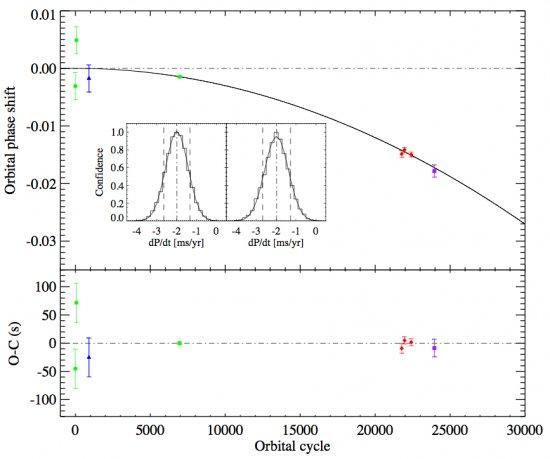We present new 10.4 m-GTC/OSIRIS spectroscopic observations of the black hole X-ray binary XTE J1118+480 that confirm the orbital period decay at (dP/dt) = −1.90 ± 0.57 ms yr−1. This corresponds to a period change of −0.88 ± 0.27 μs per orbital cycle. We have also collected observations of the black hole X-ray binary A0620–00 to derive an orbital period derivative of (dP/dt)= −0.60 ± 0.08 ms yr−1 (−0.53 ± 0.07 μs/cycle). Angular momentum losses due to gravitational radiation are unable to explain these large orbital decays in these two short- period black hole binaries. The orbital period decay measured in A0620–00 is very marginally consistent with the predictions of conventional models including magnetic braking, although significant mass-loss ((dMBH/dt)/(dM2/dt) ≤ 20 per cent) from the system is required. The fast spiral-in of the star in XTE J1118+480, however, does not fit any standard model and may be driven by magnetic braking under extremely high magnetic fields and/or may require an unknown process or non-standard theories of gravity. This result may suggest an evolutionary sequence in which the orbital period decay begins to speed up as the orbital period decreases. This scenario may have an impact on the evolution and lifetime of black hole X-ray binaries.
Fig. 1: Top panel: orbital phase shift at the time of the inferior conjunction (orbital phase 0), Tn, of the secondary star in the BHXB XTE J1118+480 versus the orbital cycle number, n, folded on the best-fit parabolic fit. The error bars give the observa
Advertised on



